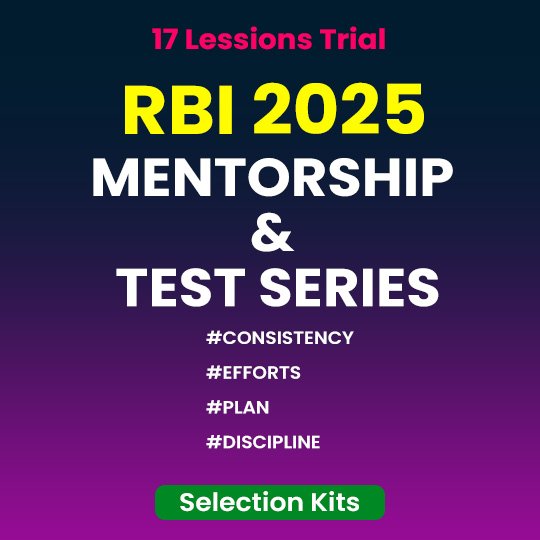Daily Current Affairs Quiz
3 July, 2025
International Affairs
1. BRICS Summit
Context:
Prime Minister Narendra Modi has embarked on a five-nation diplomatic tour beginning July 3, 2025, with a focus on strengthening India’s engagement with the Global South and reinforcing cooperation through multilateral platforms such as BRICS. The tour includes official visits to Ghana, Brazil, Trinidad and Tobago, Argentina, and Namibia. PM Modi will participate in the BRICS Summit in Rio de Janeiro, Brazil.
About BRICS
Origin
- Coined in 2001 by Jim O’Neill, Chief Economist at Goldman Sachs, in the report “Building Better Global Economic BRICs”.
- Originally referred to Brazil, Russia, India, China (BRIC).
- South Africa joined in 2010, forming BRICS.
Headquarters
- BRICS Tower, Shanghai, China
Member Countries
- Brazil – Latin America’s economic leader with vast natural resources
- Russia – Reasserting its geopolitical and economic influence
- India – Fast-growing economy with a large domestic market
- China – Global industrial and trade powerhouse
- South Africa – Represents Africa and emerging economies on the continent
Formation Context
- Formed in 2006 (BRIC), expanded in 2010 (BRICS)
- Emerged from the need for economic and political collaboration among fast-growing emerging markets
Key Goals and Objectives of BRICS
- Economic Cooperation:
- Boost intra-BRICS trade, investment, and growth
- Advocate for a balanced global financial system
- Political Influence
- Seek greater representation in global institutions (IMF, World Bank)
- Counterbalance Western dominance
- Social Development:
- Promote inclusive growth, poverty reduction, and improved living standards
- Environmental Sustainability
- Collaborate on climate change and promote sustainable development
- Reform of Global Governance:
- Push for restructuring of the UN, IMF, and World Bank to reflect the interests of emerging economies
2. Quad Launches Critical Minerals Initiative
Context:
The foreign ministers of the Quad grouping—India, the US, Japan, and Australia—launched the Quad Critical Minerals Initiative to ensure secure, diversified, and reliable supply chains of critical minerals. The move aims to counter global economic coercion and reduce overdependence on any single country, particularly amid concerns over China’s dominance and price manipulation in the sector.
Objectives of the Quad Critical Minerals Initiative
- Diversify and secure supply chains of critical minerals vital to sectors like EVs, electronics, semiconductors, and defense.
- Promote economic security and collective resilience among Quad nations.
- Expand cooperation on e-waste recycling, reprocessing of rare earths, and private sector investment in the critical minerals sector.
Why Critical Minerals Matter
- Rare earths like neodymium, dysprosium, terbium, etc., are vital for:
- Electric vehicle (EV) motors
- Jet fighter engines
- Semiconductor manufacturing
- China dominates processing and refining of these minerals, not just mining.
- It has used export controls to restrict access for strategic and economic leverage, including:
- Banning exports of gallium, germanium, and certain heavy rare earths.
- Imposing bureaucratic hurdles on Indian and Western companies.
Impact on India
- India’s growing EV manufacturing industry is facing supply constraints due to lack of approvals from China for sourcing rare earth magnets.
- Beijing has also pushed Indian companies to import full motor assemblies, rather than components, further increasing dependency.
National Critical Mineral Mission (NCMM)
- India’s NCMM, with a budget of ₹16,300 crore, aims to:
- Boost domestic exploration
- Acquire overseas assets
- Support processing R&D and recycling
- Seek funding through RISE and other multilateral platforms
National Affairs
1. India Celebrates 10 Years of Digital India Initiative
Overview
- Launched: 1st July 2015 by Prime Minister Narendra Modi
- Nodal Ministry: Ministry of Electronics and Information Technology (MeitY)
- Vision: To transform India into a digitally empowered society and knowledge economy
- Tagline (2024): Digital India: Empowering Bharat, Enabling the World
Core Objectives of Digital India
- Digital Infrastructure as a Utility to Every Citizen
- Governance and Services on Demand
- Digital Empowerment of Citizens
Nine Pillars of Digital India
- Broadband Highways
- Universal Mobile Access
- Public Internet Access via CSCs
- e-Governance (Reforming government through technology)
- e-Kranti (Electronic delivery of services)
- Information for All
- Electronics Manufacturing
- IT for Jobs
- Early Harvest Programmes (e.g., Wi-Fi hotspots, biometric attendance)
Success Factors
- Robust Digital Public Infrastructure (DPI):
- Aadhaar (Identity)
- UPI (Payments)
- DigiLocker (Digital documentation)
- Affordable Internet: Cheapest global mobile data (~₹10/GB)
- Mobile Penetration: Widespread access across urban and rural India
2. C-FLOOD: India’s Unified Flood Inundation Forecasting System
Context:
Union Jal Shakti Minister Shri C. R. Patil inaugurated C-FLOOD, a cutting-edge flood forecasting and dissemination system, on July 2, 2025, at Shram Shakti Bhawan, New Delhi. Developed collaboratively by C-DAC Pune, Central Water Commission (CWC), and NRSC, this initiative is a significant advancement in India’s disaster resilience framework.
Key Features of C-FLOOD
- What is C-FLOOD?
- A web-based Unified Inundation Forecasting System offering:
- 2-day advance flood forecasts
- Village-level flood inundation maps
- Water level predictions
- Technology Used:
- Powered by 2D hydrodynamic modelling
- Simulations run on High-Performance Computing (HPC) systems under the National Supercomputing Mission (NSM)
- Integrated with satellite-based outputs from NRSC under the National Hydrology Project (NHP)
- Coverage:
- Currently operational in:
- Mahanadi River Basin
- Godavari River Basin
- Tapi River Basin
Strategic Importance
- Disaster Preparedness:
- Supports National Disaster Management Emergency Response Portal (NDEM) with real-time flood forecasts
- Public Awareness:
- Ministry directed CWC and partner agencies to popularize the portal for wider public preparedness
- Accuracy Improvements:
- Use of satellite validation and ground-truthing to enhance forecast precision
3. Special Registration Scheme for Employers and Workers (SPREE)
Context:
The Employees’ State Insurance Corporation (ESIC), during its 196th Corporation Meeting chaired by Union Labour & Employment Minister Dr. Mansukh Mandaviya in Shimla, approved SPREE 2025 (Scheme for Promotion of Registration of Employers and Employees). This initiative is aimed at expanding social security under the ESI Act, 1948.
Key Highlights of SPREE 2025
- Duration of the Scheme:
- July 1 to December 31, 2025
- Objective:
- Promote voluntary registration of unregistered employers and employees, including contractual and temporary workers, under the ESI Act.
- Registration Process:
- Employers can register digitally via the ESIC portal, Shram Suvidha portal, and MCA portal.
- Registration will be valid from the date declared by the employer.
Significance of the Scheme
- Encourages voluntary compliance by removing fears of:
- Retrospective penalties
- Legal action
- Backdated financial demands
- Helps bring left-out establishments and workers under the ESI umbrella, especially in contractual and informal sectors.
- Aligns with India’s vision of a welfare-centric and inclusive labour ecosystem.
What is ESIC?
The Employees’ State Insurance Corporation provides healthcare, insurance, and social protection to workers under the ESI Act, 1948, covering medical, maternity, disability, and unemployment benefits.
Banking/Finance
1. Microfinance institutions Will Return to Normalcy: Ind-Ra
Context:
According to a recent report by India Ratings (Ind-Ra), the microfinance institution (MFI) sector in India is expected to return to pre-crisis normalcy only by the second half of FY26, owing to profitability challenges, rising costs, and regulatory uncertainties. The credit rating agency has assigned a ‘deteriorating outlook’ to the sector.
Key Highlights
Delayed Recovery Timeline
- MFIs are unlikely to recover to FY24 performance levels before H2 FY26.
- Factors slowing recovery include:
- High operating expenses
- Pressure on lending yields
- Regulatory tightening by State governments
Impact of Tamil Nadu and Karnataka Ordinances
- Both Tamil Nadu and Karnataka introduced ordinances aimed at curbing coercive loan recovery practices by collection agents.
- These regulatory actions have:
- Created repayment anxieties among borrowers
- Affected collection efficiency and loan performance
- Reduced lender confidence in the sector
Profitability and Yield Pressures
- Return profiles of MFIs remain under pressure, particularly in rural and semi-urban segments.
- Yield rationalization and heightened scrutiny have limited MFIs’ ability to price loans profitably.
Banking Sector’s Risk Mitigation
- Banks, which are key lenders to MFIs, are now adjusting risk models and factoring in non-MFI exposure to manage portfolio risks.
- This may reduce overall credit flow to MFIs, further constraining their growth.
2. SEBI Introduces Common Contract Note with Single VWAP
Context:
The Securities and Exchange Board of India (SEBI) has mandated the implementation of a common contract note featuring a single volume weighted average price (VWAP) for trades executed across exchanges. This directive came into effect on June 27, 2025, and is aimed at streamlining the post-trade reporting process for investors and brokers alike.
Key Highlights
Common Contract Note Introduced
- SEBI’s reform ensures that all trades executed across multiple stock exchanges (e.g., NSE, BSE) will be aggregated in a single contract note.
- This eliminates the current system where investors receive multiple contract notes for trades conducted on different exchanges.
The volume-weighted average price (VWAP)
- The volume-weighted average price (VWAP) is a technical analysis indicator used on intraday charts that resets at the start of every new trading session. It’s the average price a security has traded at throughout the day, based on both volume and price.
- The contract note will reflect a single VWAP per security, computed across all exchanges.
- This simplifies understanding of execution price, especially in high-frequency or algorithmic trades split across venues.
Benefits of the Reform
- Simplified compliance and reporting for brokers and back-office teams.
- Enhanced transparency and clarity for investors in terms of pricing and charges.
- Reduced paperwork and administrative burden for intermediaries.
3. Financial Fraud Risk Indicator (FRI)
Context:
In a major move to strengthen digital financial safeguards, the Reserve Bank of India (RBI) has issued an advisory encouraging all banks to adopt the Financial Fraud Risk Indicator (FRI) developed by the Department of Telecom (DoT). This initiative reflects a growing emphasis on real-time fraud prevention amid the rising use of digital payments across India.
Key Highlights
Real-Time Fraud Detection
- The FRI tool allows real-time risk classification of mobile numbers.
- Risk levels are categorized as:
- Medium risk
- High risk
- Very high risk
- Banks can use this tool to screen mobile numbers during transactions to prevent fraud.
Data Sources
The FRI system is powered by cross-agency intelligence from:
- Indian Cyber Crime Coordination Centre (I4C)’s National Cybercrime Reporting Portal (NCRP)
- DoT’s Chakshu platform
- Fraud intelligence shared by banks and financial institutions
RBI’s Directive
- RBI has advised all Scheduled Commercial Banks, Small Finance Banks, Payment Banks, and Cooperative Banks to integrate the FRI into their internal systems.
- This integration is expected to:
- Reduce online financial frauds
- Enhance transaction security
- Improve fraud detection and response time
Early Adopters of FRI
The tool has already been adopted by several major financial players, including:
- PhonePe
- Punjab National Bank
- HDFC Bank
- ICICI Bank
- Paytm
- India Post Payments Bank
These institutions have reportedly witnessed the tool’s operational utility in reducing fraud risk.
4. IRDAI Eases Concerns Over Bancassurance Crackdown
Context:
In a significant relief to private life insurers, the Insurance Regulatory and Development Authority of India (IRDAI) is unlikely to introduce coercive restrictions on the bancassurance distribution model, despite concerns raised over potential misselling of insurance products via banks.
Key Highlights
- IRDAI’s Position
- No cap on insurance via bancassurance.
- Misselling not considered alarming.
- Focus on facilitating, not mandating, distribution.
- Misselling Concerns (2024)
- Raised by: Finance Minister, IRDAI Chair (ex), RBI Governor, DFS Secretary.
- Allegations: Customers coerced or misled by bank staff.
- RBI & DFS Actions
- DFS: Ensure no forced sales, affordable premiums.
- RBI: Working on anti-misselling guidelines for banks and NBFCs (as per FY24 Annual Report).
- Industry Impact of Proposed Cap
- Potential 15–30% drop in bank fee income.
- Up to 12% reduction in net profits.
- FY24: Bancassurance earned banks ₹14,500 crore (~2% of total revenue).
- Insurance IPOs
- No mandatory listing, says IRDAI.
- Focus on governance, transparency, and enhanced disclosures.
- Grievance Trends
- UFBP complaints fell 10.6% in FY24.
- IRDAI formed a task force (Oct 2023) to improve bancassurance efficiency.
5. SEBI Tightens Royalty Disclosure Norms for Listed Firms
Context:
The Securities and Exchange Board of India (SEBI) has introduced enhanced disclosure norms for royalty payments to related parties, following concerns over excessive outflows and opaque contractual arrangements. The changes are aimed at ensuring informed oversight by audit committees and shareholders.
Key Highlights
Trigger for Reform
- A SEBI study in Nov 2024 found that 1 in 4 listed companies paid over 20% of net profits as royalties to related parties over FY14–FY24.
Key Disclosure Mandates
- Disaggregation of composite royalty agreements: Companies must disclose key components (brand, patents, tech, know-how) of composite IP agreements and explain why individual attributions aren’t possible.
- Peer comparison: Enhanced disclosures will allow material related-party royalty payments to be compared across firms.
- Sunset clauses: Mandatory disclosure of payment duration to prevent perpetual or one-sided agreements.
- Differentiation of fees: Professional fees, management support fees, or technical know-how charges must be disclosed, but not clubbed as royalties.
Parent-Subsidiary Transparency
- If a parent entity receives non-uniform royalties from subsidiaries abroad, it must disclose the minimum and maximum rates, a move some experts consider operationally burdensome.
6. RBI Pushes for Real-Time Credit Reporting and Grameen Credit Score to Boost Financial Inclusion
Context:
In a significant move to improve the accuracy and efficiency of lending decisions, the Reserve Bank of India (RBI) has emphasized the need for real-time or near real-time credit reporting by lenders to Credit Information Companies (CICs). The central bank also announced plans to roll out a Grameen Credit Score system tailored to improve credit access in rural India.
Key Announcements
Real-Time Credit Reporting
- Since January 1, 2025, lenders have upgraded from monthly to fortnightly credit data submission.
- RBI now urges further progress to real-time updates, which would:
- Enhance underwriting precision
- Reflect loan closures and repayments promptly
- Improve consumer credit experience
- M. Rajeshwar Rao, RBI Deputy Governor, said this shift requires investment in technology, process reengineering, and change management.
Risks and Data Governance Challenges
- Data accuracy and security remain critical.
- Rao cautioned that:
- Inaccurate or incomplete data may distort analytics and decision-making.
- Poor data security may result in legal and reputational risks.
- The growing reliance on AI and ML models raises model risk, especially if biases, validation, and performance drifts are not managed.
Grameen Credit Score for Rural Inclusion
- RBI is designing a Grameen Credit Score system to:
- Boost formal credit access for rural populations, SHG members, and marginalised communities.
- Complement existing credit scores but tailored for informal rural borrowing behavior.
No Pre-Payment Charges for Business Loans to Individuals and MSEs
- RBI bans prepayment penalties on:
- Loans to individuals and micro/small enterprises (MSEs), with or without co-obligants.
- Loans sanctioned by scheduled commercial banks, NBFCs, small finance banks, urban cooperative banks, and RRBs.
- Applies to loans up to ₹50 lakh, irrespective of prepayment source or lock-in period.
7. IndusInd Bank Launches “INDIE for Business”
Context:
IndusInd Bank has launched INDIE for Business, a digital banking platform aimed at empowering India’s 60 million-plus Micro, Small and Medium Enterprises (MSMEs) by offering integrated solutions across payments, lending, collections, and account management.
Key Features & Benefits
- Unified Financial Dashboard
- 360° view of all business accounts
- Real-time tracking of loans, EMIs, and due dates
- Digital Self-Onboarding
- Paperless registration using Aadhaar, debit card, or net banking
- Enables access to POS, QR payments, and payment links
- Multi-Entity Profile Management
- Manage multiple business entities with profile switching
- Bulk Payments & Tax Compliance
- Automate payments such as vendor salaries, GST, income tax, and customs duties
- Cross-Border Capabilities
- Supports instant, paperless international transactions
- Operational Flexibility & Security
- On-the-go transaction authorization with role-based access
Relevance to MSMEs
- Traditional banking often lacks tailored services for MSMEs due to collateral requirements and procedural delays
- INDIE for Business provides a seamless experience with tax integration, bulk transaction support, and enhanced loan visibility
8. Karur Vysya Bank Partners with Kshema General Insurance for Rural-Focused Bancassurance
Context:
Karur Vysya Bank (KVB) has entered into a strategic bancassurance alliance with Kshema General Insurance to launch a specialized dual-benefit insurance product named Kshema Kisan Sathi, focusing on India’s rural and agri-centric population.
Key Highlights of the Partnership
- Product Launch:
- Kshema Kisan Sathi is a tailor-made insurance solution targeting rural families, farmers, and agri-entrepreneurs.
- Strategic Focus:
- Aims to foster financial inclusion, resilience, and self-sufficiency in India’s rural economy.
- Technology + Outreach:
- Leverages Kshema’s tech-driven insurance platform with KVB’s vast rural customer network for wide-scale penetration.
- Socio-Economic Impact:
- Seeks to boost the rural economy through enhanced insurance coverage, risk mitigation, and financial stability.
What Is Bancassurance?
- Definition:
- Bancassurance is a distribution model in which a bank partners with an insurance company to sell insurance products through its branches and customer networks.
- Benefits:
- For banks: Additional revenue stream through commissions
- For insurers: Access to a wide, pre-existing client base
- For customers: Convenience and bundled financial services under one roof
9. SBI Launches Specialized Global Trade Finance Centres in Kolkata and Hyderabad
Context:
The State Bank of India (SBI) has inaugurated two specialized Global Trade Finance Centres (GTFCs) in Kolkata and Hyderabad to enhance its trade finance capabilities and offer faster, tech-enabled services in import-export processing.
Key Highlights
- Focus Areas:
- Inland trade processing
- Import and export transaction management
- Digitization of document flows
- Customer Benefits:
- Faster turnaround time
- Enhanced compliance standards
- Superior customer experience through streamlined and specialized service delivery
Tech-Driven Transformation
SBI’s trade finance operations are transitioning from traditional paper-based systems to digital platforms using advanced technologies:
- Artificial Intelligence (AI)
- Machine Learning (ML)
- Blockchain
- Document Digitization
This shift is expected to enhance accuracy, speed, and risk management in trade finance.
Agriculture
1. Artificial Intelligence (AI)-driven National Pest Surveillance System (NPSS)
Context:
India’s Ministry of Agriculture and Farmers Welfare plans to expand its Artificial Intelligence (AI)-driven National Pest Surveillance System (NPSS) nationwide to mitigate crop losses from pests, weeds, and diseases. The system leverages AI-based image recognition to detect pest attacks and issue advisories.
Key Highlights
- Launched: 15 August 2024
- Current Reach: ~30,000 users (farmers & extension workers)
- Planned Expansion: Up to 146 million farmers
- Coverage: Currently supports pest detection in 61 crops
Functionality
- Farmers upload images of affected crops or pests
- AI model identifies pest type using computer vision
- Provides targeted pest management advice, reducing:
- Crop losses
- Indiscriminate pesticide use
Significance
- Annual crop losses due to pests, weeds, and diseases: 10–35%
- Pest infestation varies by climate conditions (temperature, humidity, rainfall), crop type, and farming practices
- AI helps differentiate pests from beneficial insects
- Supports sustainable pest management
Broader Impact
- Agriculture contributes 18% to India’s GDP
- Sector engages 46% of India’s population
- Improved pest surveillance aids:
- Food security
- Farmer income protection
- Inflation control
Facts To Remember
1. SBI Labels Reliance Communications Loan as Fraud; Anil Ambani Faces Regulatory Heat
In a significant legal and financial development, State Bank of India (SBI) has classified its loan account of Reliance Communications Ltd. (RCom) as fraud, implicating its former chairman Anil D. Ambani in alleged fund diversion and financial irregularities. The move comes after a year-long process involving forensic audits and show-cause notices.
2. Banking System Surplus Liquidity Hits ₹3.31 Trillion — Highest Since June 13, Says RBI
As per the Reserve Bank of India (RBI) data, net liquidity in the Indian banking system stood at a surplus of ₹3.31 trillion as of July 1, 2025, the highest level recorded since June 13. The surplus persists despite recent Variable Rate Reverse Repo (VRRR) operations conducted to absorb excess liquidity.
3. PNB Waives Charges for Non-Maintenance of Minimum Balance in Savings Accounts
Punjab National Bank (PNB) has announced a significant customer-centric move by waiving penal charges for non-maintenance of Minimum Average Balance (MAB) in all savings accounts, effective July 1, 2025.
4. Starlink launches services in Sri Lanka, bridging digital divide with Island-wide coverage
Sri Lanka becomes the latest Asian nation to join Starlink’s network, following Japan, the Philippines, Malaysia, Mongolia, and Indonesia. Coverage is now live across the island, with monthly plans for residential users and for businesses.















